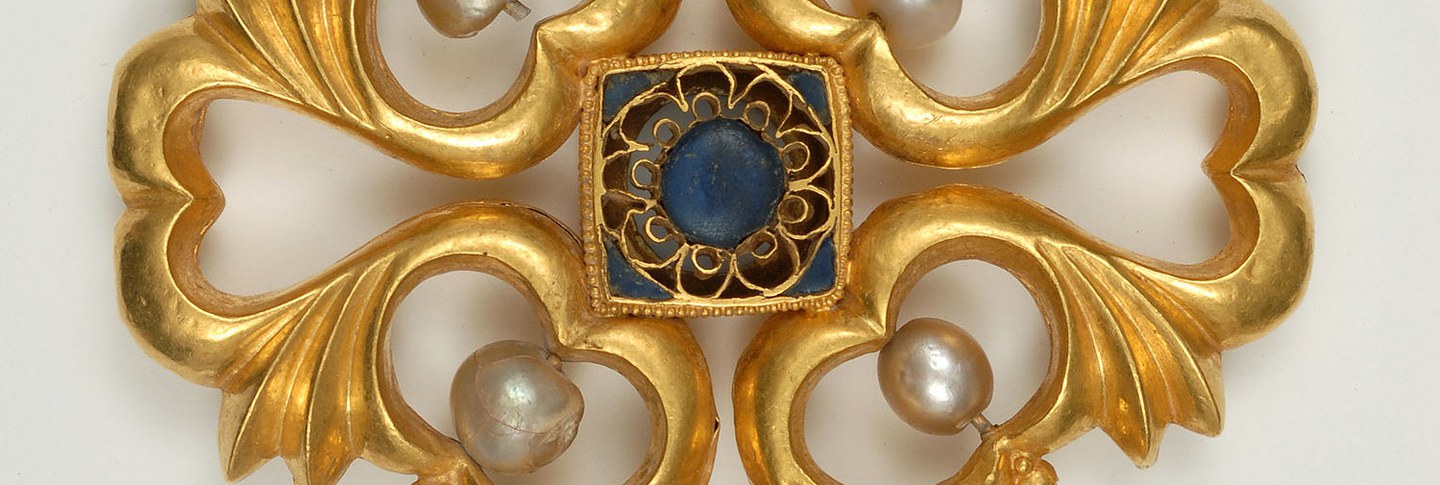As adornment intended to be worn and displayed on the body, jewelry conveyed important information about wearers’ status, age, and gender. Ornaments made of gold and precious stones represented not only an individual’s wealth, but by extension the wealth of an entire family. The aesthetics of ancient jewelry drew heavily from a repertory of motifs popular in the ancient world, especially plant patterns like vines and petals.
Exhibit Items
Roman, 3rd century; gold; 76 cm (29 15/16 in.). BZ.1947.26
Late Roman, 3rd–4th century; gold, modern pearls; 34.5 × 1.5 cm (13 ½ × 9/16 in.). BZ.1950.12
Roman, 2nd–3rd century; gold, glass paste; 29.2 × 2.2 × 1.3 cm (11 1/2 × 7/8 × 1/2 in.). BZ.1938.69.1
Roman, 2nd–3rd century; gold, glass paste, pearls; 9 cm (3 9/16 in.). BZ.1938.69.2
Hellenistic, late 4th–early 3rd century BCE; gold; 4.6 cm (1 13/16 in.). BZ.1961.23
Hellenistic, late 4th–early 3rd century BCE; gold; 2.7 cm (1 1/16 in.). BZ.1961.24
Late Roman, 4th century; rock crystal; 4.5 × 1.9 × 3.8 cm (1 3/4 × 3/4 × 1 1/2 in.). BZ.1963.6
Hellenistic, late 4th–early 3rd century BCE; gold; 2 cm (13/16 in.). BZ.1940.25
Late Roman, 4th–5th century; gold, stone; 2 cm (13/16 in.). BZ.1957.52
Early Byzantine, 7th century; gold, pearls, sapphire; 2 cm (13/16 in.). BZ.1953.12.80










